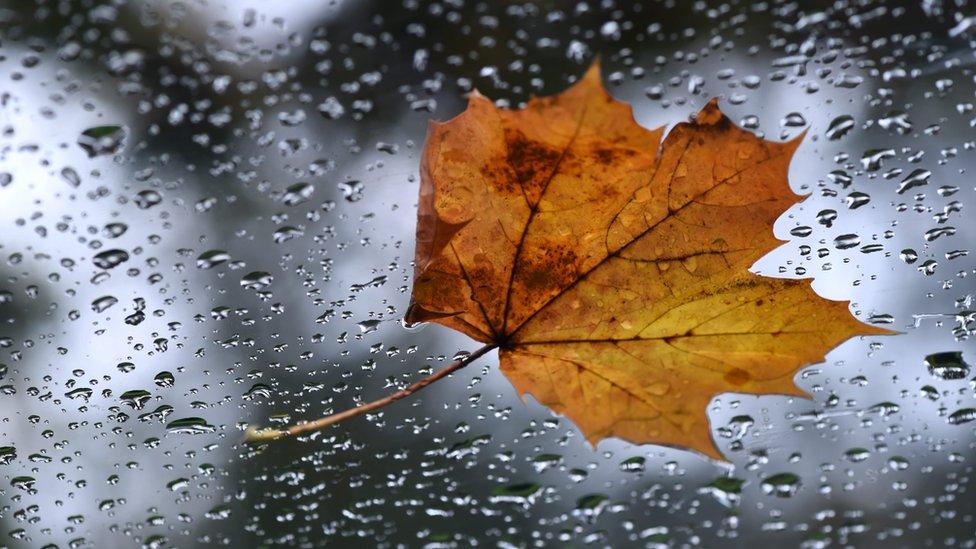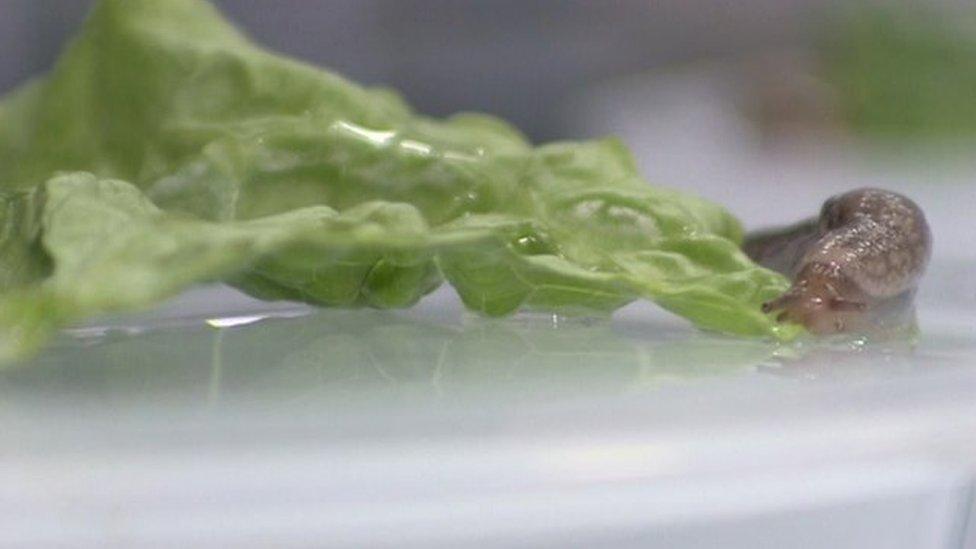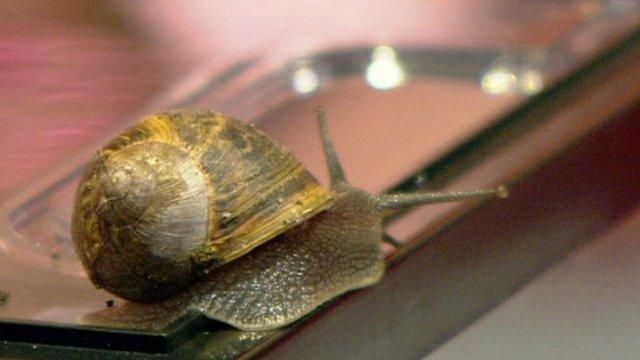'Sleepless slugs' on rise, say experts
- Published
The slug invasion that could devastate your garden
Last year's wet summer, followed by one of the warmest winters on record, has helped to create a generation of sleepless slugs, wildlife experts have warned.
The weather has not been cold enough in recent months to send the creatures into hibernation.
Conservation charity BugLife said Britons could start to a see a slug population "explosion".
This could cause "devastation for our gardens", it warned.
'Devastation for gardens'
Slugs stay active when temperatures remain above 5C (41F).
Because of the warm winter, slugs have not gone into hibernation and have been eating and and breeding through the winter months.

Slug snippets:
There are about 30 species in the UK. Most are vegetarian but a few are carnivorous
Slugs have two retractable pairs of tentacles. The upper pair are for vision and smell
The lower pair are smaller and are used for feeling and tasting
A slug's two eye-stalks can move independently and can be re-grown if lost
Slug pests cause an estimated £8m of damage to vegetable crops each year
But slugs also eat decaying vegetation and so play an important ecosystem role

The average British garden usually has as many as 20,000 slugs - with the gastropods laying as many as 200 eggs per cubic metre - but Buglife predicted that number could increase over this year by 10%.
It said a decline in populations of many of the slugs' predators, such as amphibians and hedgehogs, was also a factor.
December 2015 was the warmest since records began in 1910, with temperatures around 7.9C (46F), making it feel more like April or May.
Matt Shardlow, chief executive of Buglife, said: "Due to climate shifts, warmer winters and wetter summers, we're seeing slugs become active all year round.
"Whereas key predators like amphibians will only lay their eggs once a year, slugs are not so restricted.
"Coupled with the fact that general slug varieties are also reaching full size earlier than ever, gardeners are simply not getting any respite and need innovative management solutions.
"The impact of super-sized, sleepless slugs could spell devastation for our gardens this summer."

How to keep slugs at bay

The leopard slug is a predator of other slugs
While many slugs help condition soil by breaking it down and eat decaying plants - and even, in some cases, each other - others feed on fresh leaves and are regarded by gardeners as pests.
Gardeners can help prevent slugs from eating their plants by:
Removing cover for slugs such as leaves and bricks
Breaking up soil into smaller chunks so that it dries quicker
Putting copper tape around plants
Creating a rough area near their plants with crushed glass or sand
Putting plants by ponds so water-dwelling predators of slugs, such as frogs and newts, can keep their population down
Placing plants that repel slugs - such as those from the geranium family - next to those that attract them, including hostas
Nematode worms - which kill slugs by feeding off them parasitically - can be bought online introduced to soil where slug numbers are high
BugLife said slug pellets and other chemicals should be avoided because they could be poisonous to other animals, such as birds, cats and dogs
If you do use slug or snail pellets, the Royal Horticultural Society recommends iron phosphate pellets because they are less toxic

Plant pathologist Pippa Greenwood, who appears on Gardeners' Question Time, told BBC Radio Four's Today programme it was likely to be a "really bad year for slugs".
She said that most species of slugs in the UK were "harmless" - usually the larger ones - but a few caused "significant damage" in gardens.
Asked what gardeners should do about the problem, she added: "Take action now. What better way to spend a bank holiday weekend than going on a slug hunt."
Guy Barter, a horticulturist at the Royal Horticultural Society, said the slug population could be contained if it was a dry and hot summer because this prevented them from functioning and breeding normally.
But he said it was more likely this summer would at some point be wet - creating conditions that are ideal for slugs to breed and their numbers to quickly grow.
Mr Barter said gardeners should already be thinking about getting nematode worms - which kill slugs by feeding off them parasitically - and introducing them into their gardens when the weather is warmer.

Flowers slugs like to avoid

Slugs do not like fuchsia plants
Bergenia (elephant's ears)
Aquilegia species
Euphorbia species
Digitalis purpurea (foxglove)
Alchmilla mollis (lady's mantle)
Agapanthus
Fuchsia
Geranium species
Astrantia major
Dicentra spectabilis (bleeding heart)
Source: Wyevale Garden Centres

While good for slugs, recent weather conditions have been bad for bees and wasps.
The weather has been too warm for them to hibernate and the summers too wet for them to forage.
Wet, warm summers are also good for aphids - also regarded by gardeners as a pest - but Buglife said it was likely an increase in the number of ladybirds would balance the numbers out.
- Published5 January 2016

- Published24 February 2016
- Published17 December 2015

- Published23 February 2016

- Published23 August 2013
